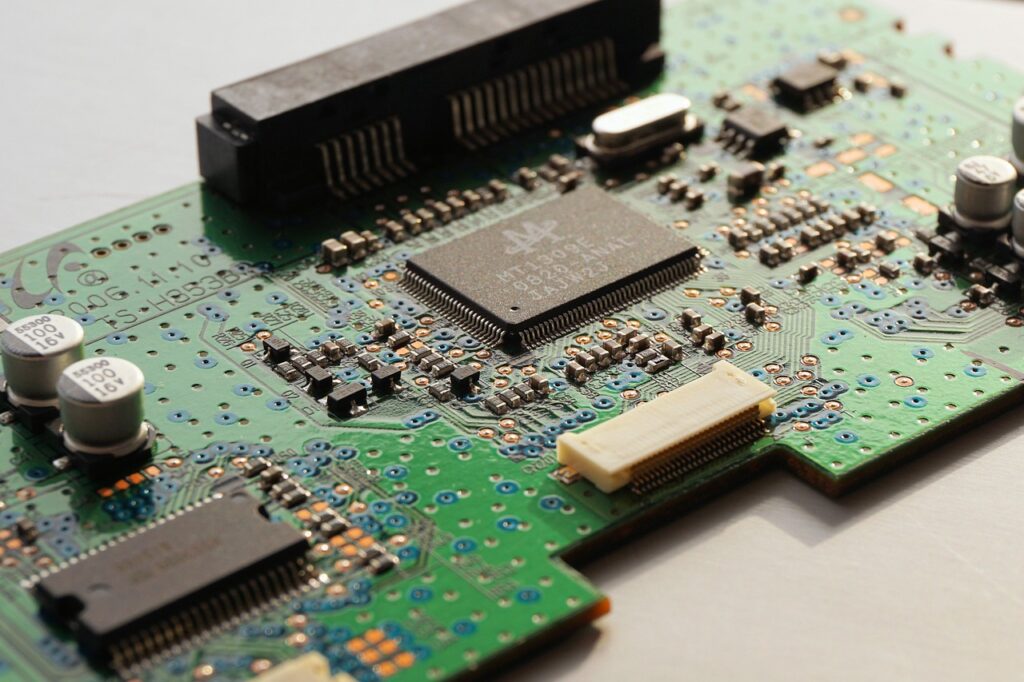Understanding the Functionality and Components of Printed Circuit Boards (PCBs)
Printed circuit boards (PCBs) are indispensable components in embedded engineering, serving as the structured foundation for integrating electronic elements essential for diverse electronic device development. Each interlinked constituent on a PCB contributes significantly to determining the functionality and performance of electronic devices. In this discourse, we aim to delve into the essence of printed circuit boards, elucidating their various constituents, types, and pivotal roles within the realm of embedded systems.
Understanding Printed Circuit Boards (PCBs)
A PCB is a flat board fabricated from non-conductive materials like fiberglass or epoxy, adorned with fine layers of conductive copper traces etched onto its surface. Although circuit boards can be manually crafted via soldering techniques, the "printed" aspect of PCBs refers to the process of imprinting the circuit pattern on the board's surface through a combination of printing and chemical etching methodologies. Diverse components such as resistors, capacitors, transistors, and integrated circuits (ICs) are affixed onto the PCB surface and interconnected with the copper traces through soldering. These copper traces serve as conduits for signal transmission between components, thus facilitating the intended functionality of the device.

Role of PCBs in Embedded Systems
PCBs serve as the backbone of electronic devices, crucially enabling their operation and functionality.
Facilitating Electrical Signal Pathways
A primary function of PCBs in embedded devices is to facilitate the smooth transmission of electrical signals amidst the components mounted on the board. These signals traverse along copper pathways, conveying vital data and instructions, thereby fostering seamless information exchange.
Components of a Printed Circuit Board
Diverse PCB components synergize to form functional electronic circuits, tailored to meet specific device requirements, design prerequisites, and performance benchmarks. Common components observed on PCBs encompass:
Passive Components: Including resistors, capacitors, and inductors employed for signal processing, filtration, and voltage regulation.
Active Components: Such as integrated circuits (ICs) housing microcontrollers or memory chips, transistors serving as switches or amplifiers, and diodes regulating current flow direction.
Connectors and Interfaces: Encompassing headers for interconnection with external wires or PCBs, alongside interface connectors like USB or HDMI ports.
Power Management Components: Like voltage regulators ensuring stability and regulation of voltage levels within the circuit.
Sensors and Actuators: Facilitating responsive interactions by detecting physical or environmental conditions or effectuating electrical signals into physical actions.
Communication on PCBs
Collectively, these components and electrical signals establish the framework for communication and data exchange, fostering connectivity between each element and enabling the device to fulfill its intended role. Protocols such as SPI, I2C, or UART may be utilized for efficient and reliable data exchange, ensuring optimal device operation and performance.
Types of Printed Circuit Boards
PCBs manifest in various types, tailored for specific purposes or applications:
Single-Sided PCBs: Featuring conductive traces on one side, commonly employed in simpler electronic circuits owing to their cost-effectiveness and ease of manufacturing.
Double-Sided PCBs: Featuring conductive traces on both sides, enabling more intricate circuit designs and higher component density compared to single-sided variants.
Multi-Layer PCBs: Comprising three or more layers of conductive traces separated by insulating layers, offering enhanced circuit density, reduced size, and superior performance.
Rigid PCBs: Constructed from solid, inflexible materials such as FR-4, providing stability and mechanical support for electronic components.
Flexible PCBs (Flex PCBs): Crafted from materials like polyimide, enabling bending or flexing without damage, ideal for applications requiring compact or bendable designs.
Rigid-Flex PCBs: Integrating rigid and flexible substrates into a single board, offering the combined benefits of both types and facilitating complex three-dimensional layouts.
PCBs in Modern Electronics
Over time, PCBs have undergone remarkable transformations, evolving from rudimentary designs with simple wiring to intricate structures with multiple layers and compact components. Advancements in surface-mount technology have facilitated automated assembly and high-density compatibility, culminating in the mass production of smaller, yet more powerful devices across diverse industries, from consumer electronics to aerospace and medical applications.
Prototyping and Testing PCB Designs
During the developmental and testing phases of modern electronic devices, engineers often leverage host adapters for system emulation and protocol analyzers for monitoring data transmission between PCB components. These tools prove instrumental in debugging and optimizing system performance.
Conclusion
In essence, PCBs epitomize the cornerstone of modern electronics, indispensable to the foundation and functionality of electronic devices. As electronic design continues to evolve, understanding the pivotal role of PCBs remains paramount in shaping the trajectory of technological advancement.




